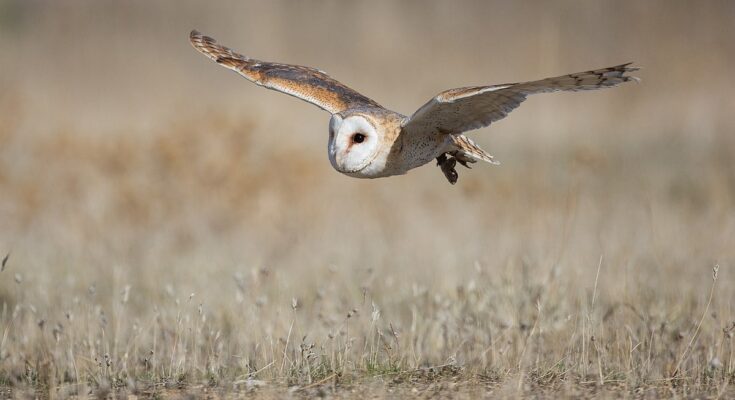The ancient Greeks closely linked the owl with wisdom, especially through its connection to the goddess Athena. But why did they believe this bird of prey embodied wisdom? What is it about the owl that made it a symbol of intellect, and what aspects of Greek culture contributed to this reverence?
The owl around the world
The symbolism of the owl varies widely across different cultures, reflecting diverse interpretations of this nocturnal bird. In Native American cultures, the owl carried different meanings. For the Hopi, it symbolized death, while for the Pueblo people, it was a protector and a symbol of wisdom.
They believed the owl could see hidden truths due to its nocturnal nature. In ancient China, the owl was often feared and seen as a harbinger of misfortune. However, it was also respected for its connection to the spiritual world, as seen in the bronze owl vessels of the Shang Dynasty.
In ancient Egypt, the owl was connected not with wisdom but with death and the afterlife. The Egyptians included the owl in hieroglyphs and tomb art, linking it to death’s unknown and mysterious aspects. Similarly, the owl was associated with the underworld and darkness in Mesopotamia.
The “Queen of the Night,” a famous Babylonian relief, depicts a goddess with owl-like features, suggesting the owl’s connection to the night and the supernatural.
The Mesopotamian Eye Goddess

Another female deity connected with the owl was the Mesopotamian Eye Goddess. Her wide, staring eyes resembled those of an owl. These figurines, often dating back to around 3000 BC, may not have represented owls directly.
Still, their exaggerated eyes could have inspired associations between the goddess’s all-seeing nature and the owl’s keen vision. As the popularity of the Mesopotamian Eye Goddess spread across the Near East to ancient Syria, some scholars believe the Greeks may have adopted this owl goddess in their pantheon.
Why did Greeks revere a bird?
The ancient Greeks, particularly in Athens, elevated the owl to a symbol of wisdom due to its association with Athena, the goddess of wisdom, war, and strategy. The owl wasn’t merely a totem for Athens. It became synonymous with the intellectual qualities that defined both the goddess and the city itself. But what earned the owl this symbolic status in Greek culture?
The owl’s nocturnal nature and its perceived ability to see in the dark may have played a key role. While other cultures might have associated this trait with death or the supernatural, the Greeks revered it as a metaphor for insight and perception.
Just as the owl could navigate and hunt in darkness, the Greeks may have believed that Athena could perceive truths and make wise decisions even in the most challenging and obscure situations. This ability to “see” beyond the obvious may have made the owl a fitting symbol for the goddess of wisdom.
The owl’s physical traits and wisdom
The owl’s human-like features also contributed to its association with wisdom. The Greeks had a largely anthropocentric view of the world, which means they saw reality through the lens of humans. For example, according to myths, the twelve gods of Olympus frequently delved into people’s lives. Did they really have nothing better to do?
The Greeks’ anthropocentric lens helped them see human-like traits in owls. Their large, forward-facing eyes give the owl a solemn and contemplative appearance, likely influencing the perception that it was a wise and intelligent creature.
The owl’s anthropomorphic qualities—its gaze and seemingly thoughtful demeanor—made it easier for Greeks to project human attributes like intelligence and foresight onto the bird.
The owl’s symbolic significance

From the sixth to the first centuries BC, Athenian coins often depicted Athena on one side and the owl on the other, reinforcing the bird’s association with intellectual and civic life. These coins, known colloquially as “owls,” became a tangible representation of wisdom.
The owl served as a guardian of the city’s values and intellect. In his play The Birds, Aristophanes humorously suggests that silver owls are the best kind because “they will never leave you; they will reside in your home and roost in your purse, hatching out small change.”
Owls around the Parthenon
The owl’s physical presence in Athens also contributed to its symbolic role. Owls were commonly seen around the Parthenon, Athena’s temple, which likely reinforced their sacred status. The frequent sight of these birds in such a significant location may have led the Greeks to view the owl as Athena’s natural companion.
The proverb “taking owls to Athens,” equivalent to the British saying “taking coals to Newcastle,” reflects the owl’s ubiquity in the city and its deep symbolic connection to the goddess.
Omen of victory in Greece
Moreover, the owl was considered an omen of victory in battle. One ancient Greek general believed that the appearance of an owl on the battlefield signified Athena’s favor and predicted success. This belief was so strong that he carried owls into battle, releasing them to boost the morale of the troops.
In ancient Athens, the phrase “There goes an owl!” signified “There are signs of victory.” The owl’s representation as a symbol of divine guidance and triumph strengthened its connection with wisdom and protection.
What was so “wise” about the owl?
The owl’s wide, human-like eyes and solemn expression have inspired awe and fear across civilizations, leading to a complex symbolism. In ancient Greece, the owl was revered as a symbol of wisdom, primarily due to its association with Athena and the belief that its ability to see in the dark represented insight and knowledge.
This view contrasts with the perceptions in other cultures, in which the owl was often associated with death, mystery, or the afterlife.
Despite these differences, a common theme runs through all these beliefs. The owl’s physical traits, particularly its large eyes and silent flight, have universally inspired a sense of mystery and reverence.
Whether seen as a wise guide or harbinger of doom, the owl remains one of human culture’s most intriguing and symbolically rich creatures.



